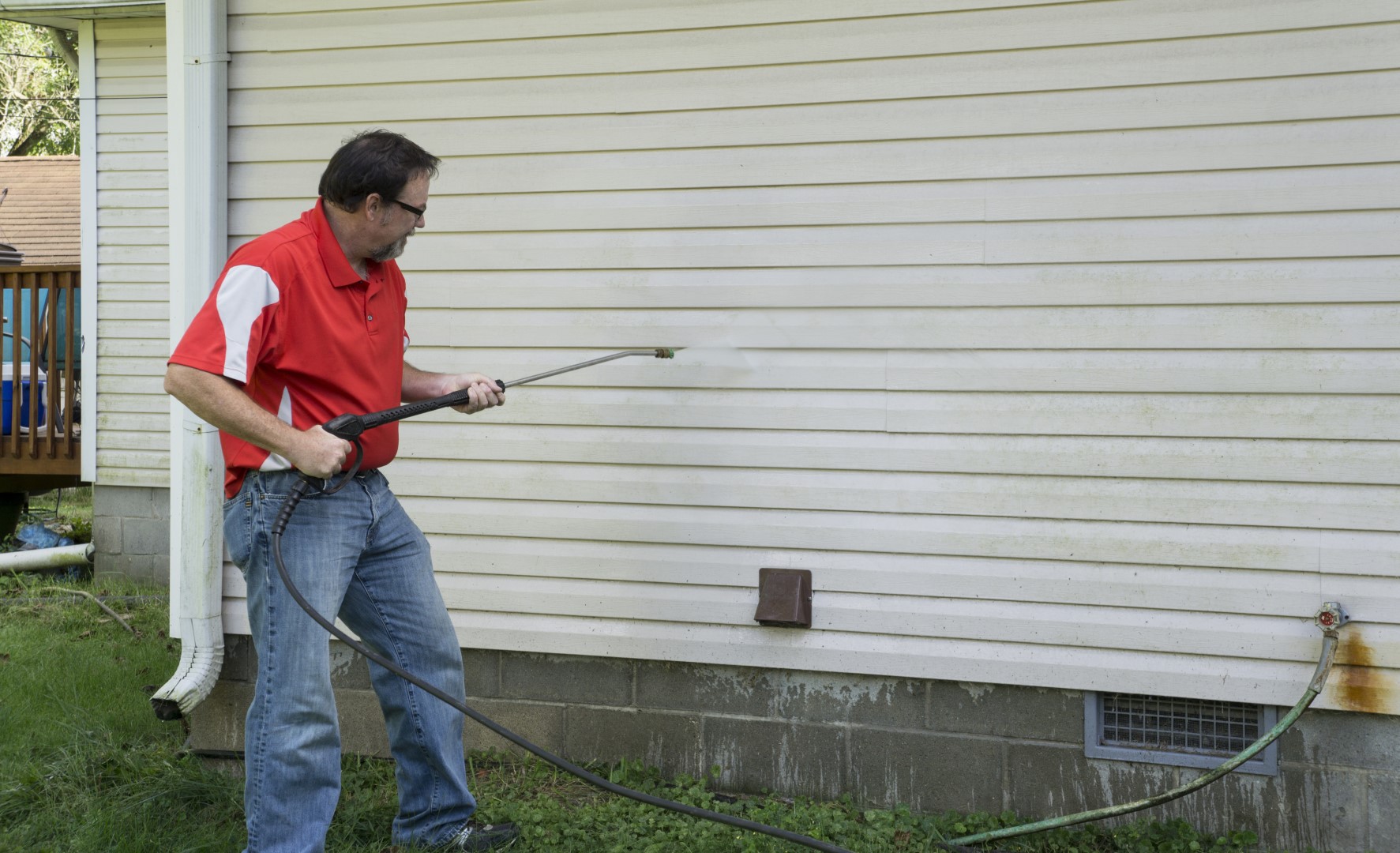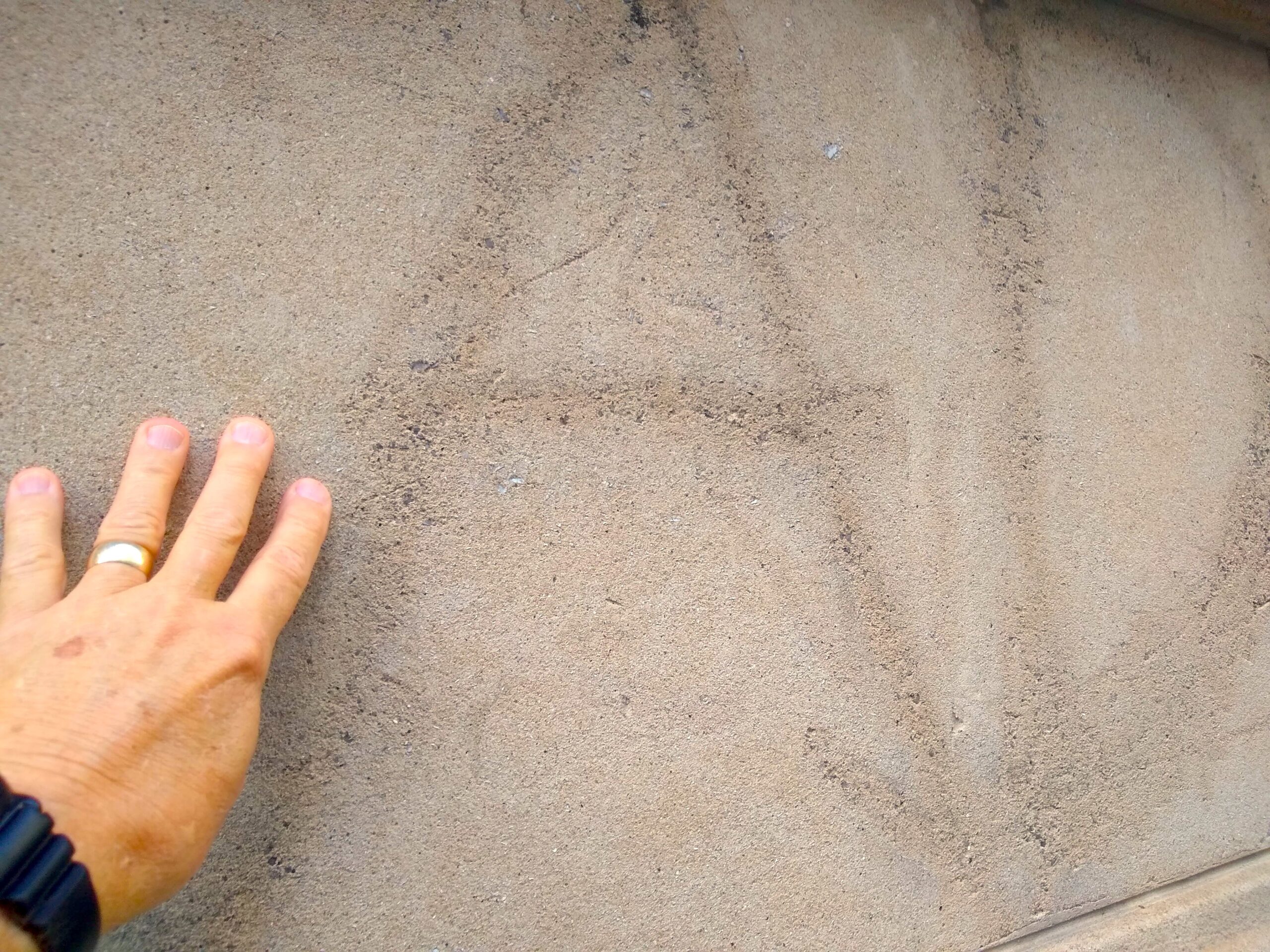If you’re not careful, a pressure washer can do serious damage to your home. The high-pressure stream of water can easily strip away paint, damage siding and gutters, and even break windows. And if you’re not using the right kind of nozzle, you could end up spraying yourself with dangerous chemicals.
If you’re not careful, a pressure washer can do some serious damage to your home. The high-pressure stream of water can easily strip away paint, break windows, and even punch holes in drywall. So before you start blasting away at your house with a pressure washer, make sure you know what you’re doing.
If you’re going to use a pressure washer on your home, there are a few things you need to keep in mind. First, always start with the lowest pressure setting and work your way up if needed. Second, keep the tip of the nozzle at least 12 inches from any surface that you’re cleaning.
And finally, be careful of any nearby electrical outlets or wiring – the stream of water from a pressure washer can easily knock them out of place or cause shorts.
With a little bit of care and caution, you can safely use a pressure washer on your home without doing any damage. Just remember to take it slow and be careful around sensitive areas like windows and electrical outlets.
Can a Pressure Washer Damage Plumbing
If you have ever wondered if a pressure washer can damage your plumbing, the answer is yes. Pressure washers use high-pressure water to clean surfaces, and if not used properly, this high-pressure water can damage your home’s plumbing.
Here are some tips to avoid damaging your plumbing with a pressure washer:
– Use the lowest pressure setting possible. The higher the pressure setting, the more likely it is to damage your plumbing.
– Be careful of what you are pointing the nozzle at.
Avoid pointing the nozzle directly at valves, joints, or other sensitive areas of your plumbing system.
– Do not use detergents or cleaners in conjunction with your pressure washer. These chemicals can damage your pipes and fixtures.
If you must use a cleaner, choose one that is specifically designed for use with pressure washers.
How to Treat a Pressure Washer Wound
If you’re lucky enough to have a pressure washer, then you know the feeling of satisfaction that comes with using one. But what happens if you accidentally injure yourself with the high-powered stream of water? Here’s how to treat a pressure washer wound.
First, assess the injury. If it’s a small cut or scrape, rinse it off with clean water and apply a bandage. If the injury is more serious, such as a deep cut or puncture wound, seek medical attention immediately.
Once the injury is treated, it’s important to take care of your pressure washer so that it doesn’t cause any more accidents. Inspect the machine for any damage or leaks before using it again. And always point the nozzle away from yourself and others when operating the pressure washer.
Pressure Washing Secrets
If you’re looking to get your home’s exterior clean and free of dirt, grime, and other build-up, pressure washing is the way to go. But before you start blasting away at your siding, there are a few things you need to know. Here are our top pressure washing secrets:
1. Always start with a lower pressure setting. You can always increase the pressure if needed, but starting too high can damage your siding or other surfaces.
2. Move the wand in a back-and-forth motion as you work your way down each section.
This will help ensure even coverage and prevent streaking.
3. Be sure to rinse off any soap or cleaner that you use before moving on to the next section. Otherwise, it could dry on the surface and be difficult to remove later.
4. Don’t forget about those hard-to-reach places! Use an extension wand or ladder to get up high and make sure every inch of your home’s exterior is sparkling clean.
5 .
When finished, give everything a once-over with fresh water to remove any remaining soap or cleaner residue . Then sit back and enjoy your freshly cleaned home!
Never Pressure Wash Windows
If you have windows that are particularly dirty, it can be tempting to pressure wash them. However, this is actually not a good idea. Pressure washing can damage the sealant around your windows, which can lead to leaks.
It can also cause the paint to peel and chip. If you really want to clean your windows, the best way to do it is with a gentle soap and water solution.
Pressure Washer Injury to Foot
If you’re using a pressure washer, it’s important to be aware of the potential for injury. One common injury is a pressure washer injury to the foot. This can happen if the high-pressure stream of water hits your foot directly.
It can also happen if you’re standing on wet ground and the pressure washer slips out of your hand, spraying your foot in the process.
Pressure washer injuries to the foot can be extremely painful and even debilitating. If you hit your foot with the full force of the water stream, you could fracture bones or tear tendons.
Even if you don’t have any visible injuries, it’s important to seek medical attention right away because there could be internal damage that’s not immediately apparent.
To avoid a pressure washer injury to your foot, always wear protective footwear when using this type of equipment. Be sure to keep a firm grip on the machine at all times, and never point it at anyone else – including yourself!
If you do accidentally spray yourself with water, rinse off immediately and dry thoroughly to avoid infection.
Minor Pressure Washer Injury
If you’ve ever used a pressure washer, you know that they can be extremely powerful. And while that’s great for getting big jobs done quickly, it also means that there’s a potential for injury if you’re not careful.
One of the most common injuries from using a pressure washer is minor skin burns.
This can happen if the water being sprayed is too hot, or if it comes into contact with your skin for too long. To avoid this, always wear protective clothing and gloves when using a pressure washer, and be sure to keep the nozzle moving so that the water doesn’t stay in one spot on your skin for too long.
If you do end up with a minor burn from a pressure washer, immediately rinse the area with cool water for several minutes.
Then apply a sterile bandage to the area and seek medical attention if necessary. With proper care, these burns will heal quickly and shouldn’t cause any lasting damage.
So remember to use caution when operating a pressure washer, and don’t forget to protect yourself from its powerful spray!
Pressure Washer Hand Injury
If you’ve ever used a pressure washer, you know how powerful they can be. The high-pressure water can easily remove dirt and grime from surfaces. But that same power can also cause serious injuries if you’re not careful.
One of the most common injuries from pressure washers is to the hands. The water coming out of the machine is under a lot of pressure, and it can quickly cut through skin. This can lead to severe cuts and even amputations.
To avoid hand injuries, always wear gloves when using a pressure washer. And be extra careful around sharp edges or objects that could catch on the glove and pull your hand into the stream of water.
If you do happen to get injured by a pressure washer, seek medical attention immediately.
Pressure Washer Injury Pictures
If you’re considering purchasing a pressure washer, it’s important to be aware of the potential dangers they pose. Pressure washers are powerful tools that can cause serious injuries if used improperly. In this blog post, we’ll take a look at some pressure washer injury pictures to show you just how dangerous these machines can be.
One of the most common injuries caused by pressure washers is lacerations. The high-pressure water stream from a pressure washer can easily cut through skin and flesh, leading to severe bleeding and potentially amputation. In some cases, the victim may even be decapitated.
Another hazard posed by pressure washers is electrocution. If the machine is not properly grounded, the operator or anyone nearby can be severely shocked or even killed by electricity. This is especially true if the operator is using an extension cord with the machine.
Finally,pressure washers can also cause chemical burns if chemicals are added to the water stream. These burns can be extremely painful and may require hospitalization for treatment.
As you can see, pressure washers are very dangerous machines that should only be operated by trained professionals.
If you must use a pressure washer yourself, always follow the manufacturer’s instructions carefully and never point the nozzle at anyone else while operating the machine.

Credit: washh.com
Can a Pressure Washer Damage a House?
Yes, a pressure washer can damage a house. The high-pressure water can strip away paint, loosen siding, and even break windows. Pressure washers are also capable of creating holes in walls and roofs.
Can Pressure Washers Damage Concrete?
If you’re wondering whether pressure washers can damage concrete, the answer is yes – but it’s not as simple as that. While pressure washers are generally safe to use on most surfaces, including concrete, there are a few things to keep in mind in order to avoid any damage.
For starters, the amount of pressure that a pressure washer puts out can be damaging to concrete if it’s too high.
That’s why it’s important to always start with the lowest setting and work your way up if needed. Additionally, hold the nozzle of the pressure washer at least 12 inches away from the surface of the concrete so that you don’t etch or chip the surface. Finally, make sure you’re using a detergent designed for pressure washers – using regular soap can actually cause more damage to concrete.
With these tips in mind, you can safely use a pressure washer on concrete without worry about damaging it.
What is the Most Common Problem With Pressure Washers?
If you’re having issues with your pressure washer, you’re not alone. In fact, pressure washers are one of the most common problems we see in our service department. The most common problem is usually related to the pump, which is the heart of the machine.
There are a few things that can go wrong with the pump, but the most common issue is loss of prime. This means that the pump isn’t getting enough water to operate properly and can cause a number of problems, including loss of power and low water pressure.
There are a few things you can do to try and fix this problem on your own, but if you’re not comfortable working on your pressure washer, we recommend bringing it in to our service department so our trained technicians can take a look at it.
In most cases, loss of prime can be fixed fairly easily and won’t require major repairs.
What Should You Not Do With a Pressure Washer?
If you’re planning on using a pressure washer, there are a few things you should avoid doing. First, never point the nozzle directly at someone. The high-pressure stream of water can cause serious injuries.
Second, don’t use a pressure washer on delicate surfaces such as painted walls or windows. The powerful stream of water can strip away paint or damage glass. Finally, be careful not to aim the nozzle too close to the ground.
The high-pressure stream of water can create divots in your lawn or concrete patio. By following these simple tips, you’ll be able to safely and effectively use a pressure washer for all your cleaning needs.
Dangers of using pressure washers on your property
Conclusion
You may love your pressure washer, but did you know that it can actually damage your home? Pressure washers are incredibly powerful tools that blast away dirt and grime, but they can also cause serious damage to your home’s siding, windows, and doors. Here’s what you need to know about pressure washer damage and how to avoid it.
Pressure washers use high-pressure water to clean surfaces. While this is great for getting rid of tough dirt and stains, it can also be very damaging to your home’s exterior. The high-pressure water can strip away paint, deteriorate caulk and sealant, crack windows, and even break through siding.
To avoid pressure washer damage, always use the lowest pressure setting possible for the job at hand. Start with the nozzle a few feet away from the surface you’re cleaning and slowly move closer until you find the right balance of power and safety. When in doubt, err on the side of caution – it’s better to spend a little more time cleaning than it is to repair damaged siding or replaced cracked windows.

